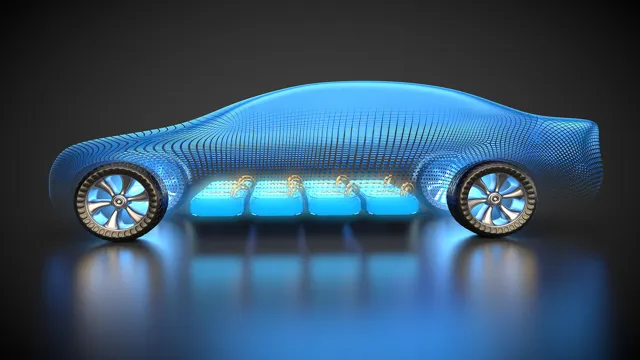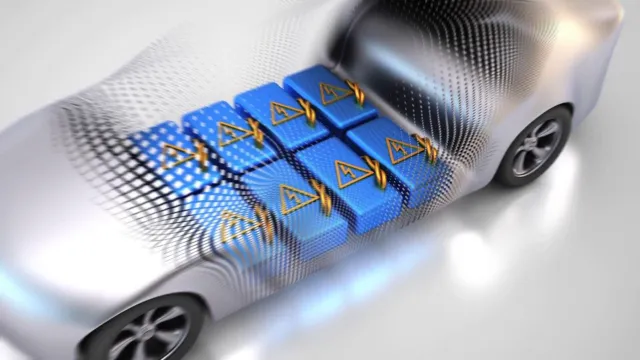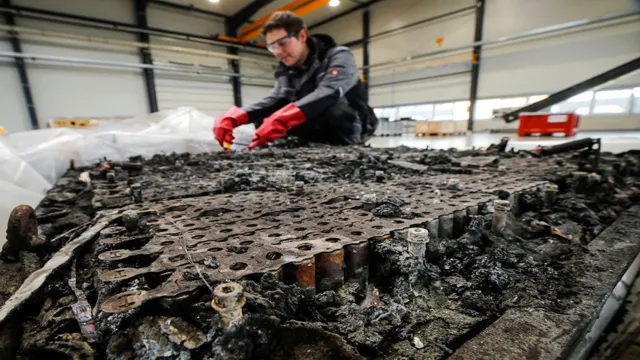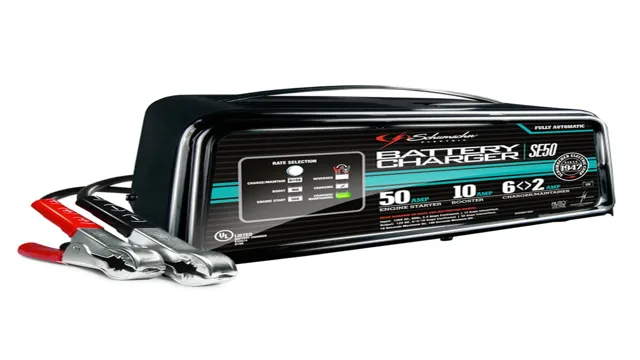Revolutionizing Mobility: The Future of En Route Electric Car Battery Change Stations
Electric car battery changes are the way of the future when it comes to transportation. With the constant advancements in technology and the increasing demand for greener and more sustainable options, the automotive industry has been making significant strides in the production of electric cars. One of the most significant components of electric cars is their battery, which provides energy to the motor.
However, the battery technology is still undergoing changes to improve its efficiency and sustainability. Will these changes make electric cars more accessible and cost-effective for the average person? Let’s explore the future of transportation with electric car battery changes.
Current Electric Car Battery Station Options
Electric car change battery station options are expanding rapidly as the popularity of electric cars increases. Tesla has been at the forefront of the movement, and their Supercharger stations can provide a full charge in as little as 30 minutes. Other automakers are also jumping on board, such as General Motors with their “Fast Charging” stations for the Chevy Bolt.
Charging infrastructure companies like ChargePoint and EVgo are also expanding their networks, providing more options for electric car drivers. The concept of swapping out batteries instead of charging them is also being explored, with companies like Ample and Tesla testing out battery swap stations. The future looks bright for the electric car battery station industry, as more investment is being made to make charging or swapping out batteries a more convenient and accessible process.
Charging vs. Battery Swapping
As the popularity of electric cars continues to rise, so do the options for charging and battery swapping stations. Charging stations are currently the most commonly available option, allowing drivers to plug in their cars and wait for the battery to recharge. However, battery swapping stations are also becoming more prevalent, offering quicker and more convenient options for drivers on-the-go.
With a battery swap, the empty battery is exchanged for a fully charged one, allowing for a seamless transition without waiting for a charge. While both options have their advantages, it ultimately depends on the driver’s needs and preferences. Those with more time and a lower budget may opt for traditional charging stations, while those with a busy schedule and more disposable income may prefer the convenience of battery swapping.
As the technology improves and becomes more widely accessible, it’s likely that both options will continue to grow in popularity, providing electric car drivers with even more ways to keep their vehicles powered up.
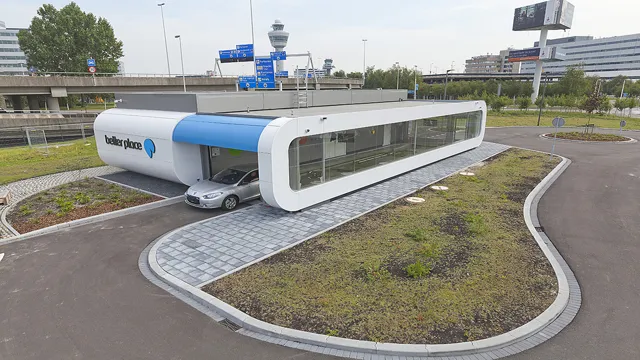
Locations and Availability
If you’re considering purchasing an electric car, you may be wondering where you can find charging stations. Luckily, there are plenty of options available, from public charging stations on main roads to private ones in residential areas. Some popular companies that offer electric car battery stations include Tesla, ChargePoint, and EVgo.
Tesla is known for its Supercharger network, which offers fast charging capabilities for Tesla owners. ChargePoint offers over 100,000 charging stations across the United States, while EVgo focuses on fast charging options with its DC Fast Chargers. With all of these options available, you can easily find a charging station near you and keep your electric car battery charged on the go.
The Benefits of Battery Swapping
Electric car technology has been continually advancing, and industry experts are looking towards battery swapping stations as a way to solve the infrastructure problems of electric cars. The concept involves quickly removing the depleted battery from an electric vehicle and replacing it with a fully charged one, which takes as little as three minutes. The benefits of battery swapping include reducing long charging times, lowering the cost of electric cars, and reducing the need for large batteries that add to the weight of the vehicles.
This innovation will go a long way in eliminating the concept of range anxiety, which is a significant concern of electric vehicle owners today. Many car companies are implementing battery-swapping stations to provide better services to their electric cars and could have a significant impact on the environment and accessibility to electric cars for consumers. With the growth of Electric car change battery stations, it seems like electric cars will become more attractive and accessible to drivers.
Speed and Convenience
If you’re someone who prioritizes speed and convenience, then battery swapping is an excellent solution for you. With this option, you won’t have to wait around for your car to charge. Instead, you can quickly swap out your battery and be on your way in just a few minutes.
Battery swapping stations are becoming increasingly popular and are available in many locations, making it easy for anyone to access them. By choosing to utilize battery swapping, you’re not only saving time, but you’re also contributing to a more sustainable future. It’s like changing out a depleted water bottle during a marathon to keep yourself going – quick, simple, and effective.
So, next time you need a quick recharge, consider battery swapping as your go-to solution.
Increased Driving Range
If you are one of those people who get anxious about the limited driving range of electric cars, then battery swapping might just be the solution you’ve been waiting for. One of the biggest benefits of battery swapping is that it significantly increases driving range, making longer trips more feasible for drivers. With battery swapping, you don’t have to worry about running out of power on the road.
You can simply swap your depleted battery with a fully charged one at a swapping station and continue your journey without any downtime. It’s like exchanging a spent battery for a fresh one, just like how we replace our phone batteries. The convenience and ease of battery swapping make it a highly feasible option for drivers who are looking for longer driving ranges without compromising on the environment.
Reduced Environmental Impact
Battery swapping is an innovative solution that has been introduced to reduce the environmental impact of traditional fuel-powered vehicles. By switching to battery-powered electric vehicles, we have already made significant progress in reducing carbon emissions that contribute to global warming. However, the process of manufacturing and disposing of batteries can have a negative environmental impact.
Therefore, battery swapping serves as a sustainable solution, allowing for the reusing of batteries and reducing waste. Battery swapping stations are equipped with a variety of batteries that can be switched out quickly, providing drivers with a hassle-free, affordable and eco-friendly option for transportation. This practice eliminates the need for the time-consuming process of charging or the costly replacement of batteries.
As a result, the use of battery swapping as an alternative to traditional fuel-powered vehicles is a significant step in reducing our carbon footprint, resulting in a healthier and more sustainable world for future generations.
The Challenges of Battery Swapping
The concept of having electric car change battery stations is a great idea for combating the issue of range anxiety among EV owners. However, the implementation of battery swapping stations has been challenging. One of the main issues is the standardization of batteries across various car manufacturers.
As each manufacturer has their own unique battery design and connection system, it becomes challenging to develop a universal swappable battery system that is applicable to all electric vehicles. Another challenge is the cost of setting up these stations, which requires a significant investment in infrastructure, such as the necessary equipment, installation, and maintenance costs. Additionally, the logistic challenges of handling, transporting, and storing large batteries can be a significant hurdle.
Nonetheless, despite these challenges, the idea of battery swapping may still be a viable solution for the future of electric vehicles, as it has the potential to overcome some of the primary concerns of EV owners, including range anxiety and long charging times.
High Upfront Costs
When it comes to electric vehicles, one of the biggest challenges is the high upfront cost. This is particularly true when it comes to battery swapping, which involves exchanging a depleted battery for a fully charged one at a swapping station. Battery swapping is a promising solution for drivers who don’t have the option to charge their EVs at home or work, but the high cost of setting up such stations can be a barrier for companies.
Moreover, it’s not just the cost of the battery swapping infrastructure that’s expensive, but also the cost of the batteries themselves. Despite these challenges, battery swapping has the potential to revolutionize the EV market, providing a convenient and efficient way for drivers to keep their vehicles charged and ready to go.
Infrastructure Development
Battery swapping is one of the most promising solutions for reducing the ecological footprint of electric vehicles (EVs) as it can help curb range anxiety and long charging times. However, implementing battery swapping stations presents several technical and economical challenges that need to be addressed. Firstly, battery swapping requires not only a considerable infrastructure investment but also a large space that is required to store and manage the batteries.
Secondly, the batteries of EVs come in different sizes, shapes, and voltages. Therefore, designing universal battery packs that can fit any electric car can be quite challenging. Moreover, the safety of battery swapping is a critical issue that cannot be overlooked.
Preventing the risk of damage or fire during handling or transportation requires specialized tools, trained personnel, and a robust technical infrastructure in place. Lastly, finding a viable business model that can offset the cost incurred in building and operating the swapping stations poses another substantial challenge. As battery swapping is relatively new, it is still uncertain whether it can compete economically with traditional EV charging technologies.
Nonetheless, despite these challenges, battery swapping could be an integral part of developing the next-generation of electric transportation infrastructure.
The Future of Electric Car Battery Swapping Stations
Electric car change battery stations have been gaining popularity in recent years due to the increasing demand for sustainable transportation. These stations provide a convenient and efficient way for drivers to swap out their depleted batteries with fully charged ones, allowing them to quickly get back on the road without needing to wait for their cars to recharge. While this technology is still in its early stages, the future of electric car battery swapping stations looks promising.
As battery technology continues to improve and become more affordable, we can expect to see more of these stations popping up all over the world, making electric cars an even more practical and accessible mode of transportation for people everywhere. With the potential to dramatically reduce the carbon footprint of transportation, electric car change battery stations are poised to play a significant role in the transition to a more sustainable future.
Conclusion
In a world where the only constant is change, the electric car change battery station represents the perfect embodiment of progress and innovation. Just as our devices need new batteries to function optimally, our vehicles require frequent recharging to keep us going. Hence, the electric car change battery station becomes an essential tool in our arsenal in the fight against climate change and the preservation of our planet.
With this technology, we can reduce our carbon footprint while enjoying the convenience of on-the-go charging. So let’s embrace this exciting change, and power up towards a brighter, cleaner future!”
FAQs
How does an electric car battery work?
An electric car battery works by converting stored chemical energy into electrical energy to power the vehicle’s electric motor.
How often do electric car batteries need to be replaced?
The lifespan of an electric car battery varies, but it generally lasts between 8-10 years before needing to be replaced.
Can electric car batteries be recycled?
Yes, electric car batteries can be recycled. They contain valuable materials like lithium and cobalt that can be reused in new batteries or other products.
Do electric car owners have to use specific battery charging stations?
No, electric car owners can charge their batteries at any charging station that is compatible with their vehicle’s charging system. However, some car manufacturers have their own charging networks that offer faster charging speeds.
